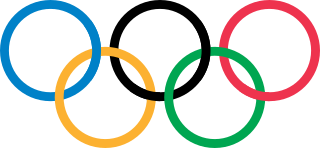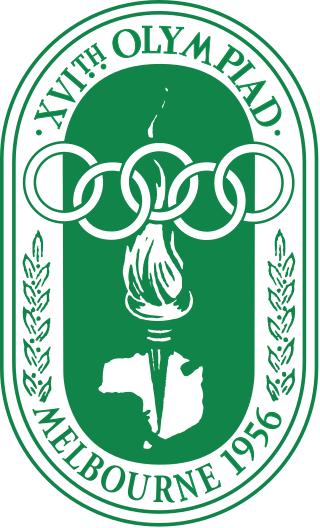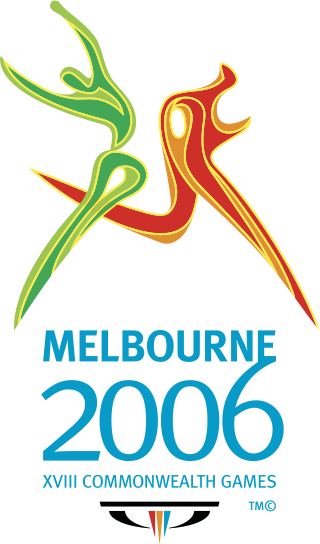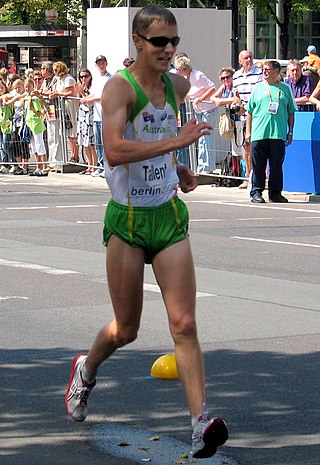Related Research Articles

The modern Olympic Games or Olympics are the leading international sporting events featuring summer and winter sports competitions in which thousands of athletes from around the world participate in a variety of competitions. The Olympic Games are considered the world's foremost sports competition with more than 200 teams, representing sovereign states and territories participating; by default the Games generally substitute for any World Championships the year in which they take place. The Olympic Games are held every four years; since 1994, they have been alternated between the Summer and Winter Olympics every two years during the four-year period.

The Summer Olympic Games, also known as the Games of the Olympiad, and often referred to as the Summer Olympics, is a major international multi-sport event normally held once every four years on leap years. The inaugural Games took place in 1896 in Athens, Greece, and the most recent Games were held in 2021 in Tokyo, Japan. The International Olympic Committee (IOC) is responsible for organising the Games and for overseeing the host city's preparations. The tradition of awarding medals began in 1904; in each Olympic event, gold medals are awarded for first place, silver medals for second place, and bronze medals for third place.
The Winter Olympic Games were created out of the success of the Summer Olympic Games, which are regarded as the largest and most prestigious multi-sport international event in the world.

The 2000 Summer Olympics, officially the Games of the XXVII Olympiad and also known as Sydney 2000 the Millennium Olympic Games or the Games of the New Millennium, was an international multi-sport event held from 15 September to 1 October 2000 in Sydney, New South Wales, Australia. It marked the second time the Summer Olympics were held in Australia, and in the Southern Hemisphere, the first being in Melbourne, in 1956.

The 1976 Summer Olympics, officially known as the Games of the XXI Olympiad and commonly known as Montreal 1976, were an international multi-sport event held from July 17 to August 1, 1976, in Montreal, Quebec, Canada. Montreal was awarded the rights to the 1976 Games at the 69th IOC Session in Amsterdam on May 12, 1970, over the bids of Moscow and Los Angeles. It was the first and, so far, only Summer Olympic Games to be held in Canada. Toronto hosted the 1976 Summer Paralympics the same year as the Montreal Olympics, which still remains the only Summer Paralympics to be held in Canada. Calgary and Vancouver later hosted the Winter Olympic Games in 1988 and 2010, respectively.

The 1956 Summer Olympics, officially known as the Games of the XVI Olympiad, were an international multi-sport event held in Melbourne, Victoria, Australia, from 22 November to 8 December 1956, with the exception of the equestrian events, which were held in Stockholm, Sweden, in June 1956.

The 1960 Winter Olympics were a winter multi-sport event held from February 18 to 28, 1960, at the Squaw Valley Resort in Squaw Valley, California, United States. The resort was chosen to host the Games at the 1956 meeting of the International Olympic Committee (IOC). Squaw Valley was an undeveloped resort in 1955, so the infrastructure and all of the venues were built between 1956 and 1960 at a cost of US$80,000,000. The layout was designed to be intimate, allowing spectators and competitors to reach most of the venues on foot.

The 2006 Commonwealth Games, officially the XVIII Commonwealth Games and commonly known as Melbourne 2006, was an international multi-sport event for members of the Commonwealth held in Melbourne, Australia between 15 and 26 March 2006. It was the fourth time Australia had hosted the Commonwealth Games. It was also the largest sporting event to be staged in Melbourne, eclipsing the 1956 Summer Olympics in terms of the number of teams competing, athletes competing, and events being held.

The 1988 Summer Paralympics were the first Paralympics in 24 years to take place in the same city as the Olympic Games. They took place in Seoul, South Korea. This was the first time the term "Paralympic" was used officially.

The 2008 Summer Paralympic Games, the 13th Summer Paralympic Games, took place in Beijing, China from September 6 to 17, 2008. As with the 2008 Summer Olympics, equestrian events were held in Hong Kong and sailing events in Qingdao. It was first time the new Paralympic logo featured in the Summer Paralympics since its rebranding after the 2004 Summer Paralympics.

Bourke Street is one of the main streets in the Melbourne central business district and a core feature of the Hoddle Grid. It was traditionally the entertainment hub of inner-city Melbourne, and is now also a popular tourist destination and tram thoroughfare.
This is the full table of the medal table of the 1956 Summer Olympics in Melbourne, Australia and Stockholm, Sweden.

Jared Tallent is an Australian race walker and Olympic gold medallist in the 50 km walk from London in 2012. He is a four-time Olympic medallist, three-time World Championship medallist and holds the current Olympic record in the 50 km walk.

The Palace Theatre was an entertainment venue located in Melbourne, Australia. First built for live theatre in 1912, it was also used as a cinema and for live music. It was demolished except for its facade in 2020 after much community opposition, to be replaced by a hotel.
The 2008 Summer Paralympics closing ceremony was held at the Beijing National Stadium, also known as the Bird's Nest. It began at 8:00 pm China Standard Time (UTC+8) on September 17, 2008. The number 8 is associated with prosperity and confidence in Chinese culture.

The Olympic Games ceremonies of the Ancient Olympic Games were an integral part of these Games; the modern Olympic games have opening, closing, and medal ceremonies. Some of the elements of the modern ceremonies date back to the Ancient Games from which the Modern Olympics draw their ancestry. An example of this is the prominence of Greece in both the opening and closing ceremonies. During the 2004 Games, the medal winners received a crown of olive branches, which was a direct reference to the Ancient Games, in which the victor's prize was an olive wreath. The various elements of the ceremonies are mandated by the Olympic Charter, and cannot be changed by the host nation. This requirement of seeking the approval of the International Olympic Committee (IOC) includes the artistic portion of opening and closing ceremonies.

The 2012 Summer Paralympics opening ceremony was held on 29 August 2012, starting at 20:30 BST and marking the official opening of the 2012 Summer Paralympics in London, England. The show – named Enlightenment – had Jenny Sealey and Bradley Hemmings as its artistic directors, leading a team that included Jon Bausor as set designer and Moritz Junge as costume designer. Queen Elizabeth II officially opened the Games. The ceremony was performed in the Olympic stadium in London in front of a capacity audience of 80,000 people.
The flag bearers of 204 National Olympic Committees (NOCs) arrived into the main Olympic Stadium, during the closing ceremony of the 2008 Summer Olympics, held in Beijing on 24 August 2008. The flag bearers from each participating country entered the stadium informally in single file, and behind them marched all the athletes without any distinction or grouping by nationality. The blending of all the athletes is a tradition that dates from the 1956 Summer Olympics, after a suggestion by Australian-born British student John Ian Wing, who thought it would be a way of bringing the athletes of the world together as "one nation." The flags of each country were not necessarily carried by the same flag bearer as in the opening ceremony.

The 2000 Summer Olympics Closing Ceremony was held on 1 October 2000 in Stadium Australia. As with the opening ceremony, the closing ceremony was directed by Ric Birch as Director of Ceremonies while David Atkins was the Artistic Director and Producer. The Closing Ceremony was attended by 114,714 people, the largest attendance in modern Olympic Games history. The ceremony celebrated Australiana; Australian cultural celebrities, icons, media, and music, with floats designed in the style of Reg Mombassa. Around 2.4 billion watched the telecast of the closing ceremony.
References
- ↑ John Ian Wing: Methodist Children’s Homes and the Olympics 1956 Archived 17 May 2011 at the Wayback Machine . Wing's account of his early life, page found 2011-06-28.
- ↑ Gordon, Harry (24 September 2003). "The changing face of a dear-old arena". The Age.
Perhaps the greatest single contribution the 1956 Games made to the Olympic movement came from an anonymous Chinese boy, a 17-year-old apprentice carpenter who wrote cheekily to the organisers suggesting that the procession at the closing ceremony should not be a traditional march, with divided nations, but one joyous intermingled affair, with athletes from all nations linking arms and waving. The idea was adopted, and that is the way it has been since. That Chinese lad, later identified as John Ian Wing, changed the closing ceremony forever. On the 30th anniversary of the Games, through an essay in Time magazine, I played a role in finding him – living as a builder in England.
- ↑ John Ian Wing: Methodist Children’s Homes and the Olympics 1956 Archived 17 May 2011 at the Wayback Machine , describing his life in an orphanage, adoption and details of why he wrote the letter.
- ↑ Wing, John Ian. "History of the Olympic Closing Ceremony" . Retrieved 4 December 2014.
At the time, I was living above my father's restaurant at 16 Bourke Street Melbourne, which was two doors away from St James picture theatre. It was now about 11.00pm. A few hours earlier, looking down into the street, I watched people lining up in an orderly manner waiting to go into the theatre. Now I watched them come out in one big mass, spilling out onto the road and stopping the traffic. They were smiling and laughing and even talking to strangers as if they had known each other before. Then the 'idea' came to me. As I was writing my letter to the chairman of the Organising Committee, I suggested that all the athletes of the world should come together for the closing ceremony, to unite and intermingle and enter the Stadium as One Nation.
- ↑ Culpepper, Chuck (23 August 2008). "His big idea had legs". Los Angeles Times.
- ↑ https://www.npr.org/sections/tokyo-olympics-live-updates/2021/08/08/1025404479/why-olympic-athletes-dont-march-behind-their-own-flag-at-the-closing-ceremony Shortly after the Olympics were over, Wing told The Age newspaper, he was in his father's restaurant when a waiter told him he had a visitor. There, a man in formal attire handed him a plastic case, containing an Olympic bronze medal. "It is from Mr. Kent Hughes," the man said as he left.
- Don't Write a Letter of Complaint... Offer a Solution!" at the Wayback Machine (archived 8 February 2012) DimSum. 20 Sept. 2007. The British Chinese Community Website. 5 Nov. 2007.
- Location of John Ian Wing Parade at the Sydney Olympic Park (Newington) (Google maps)